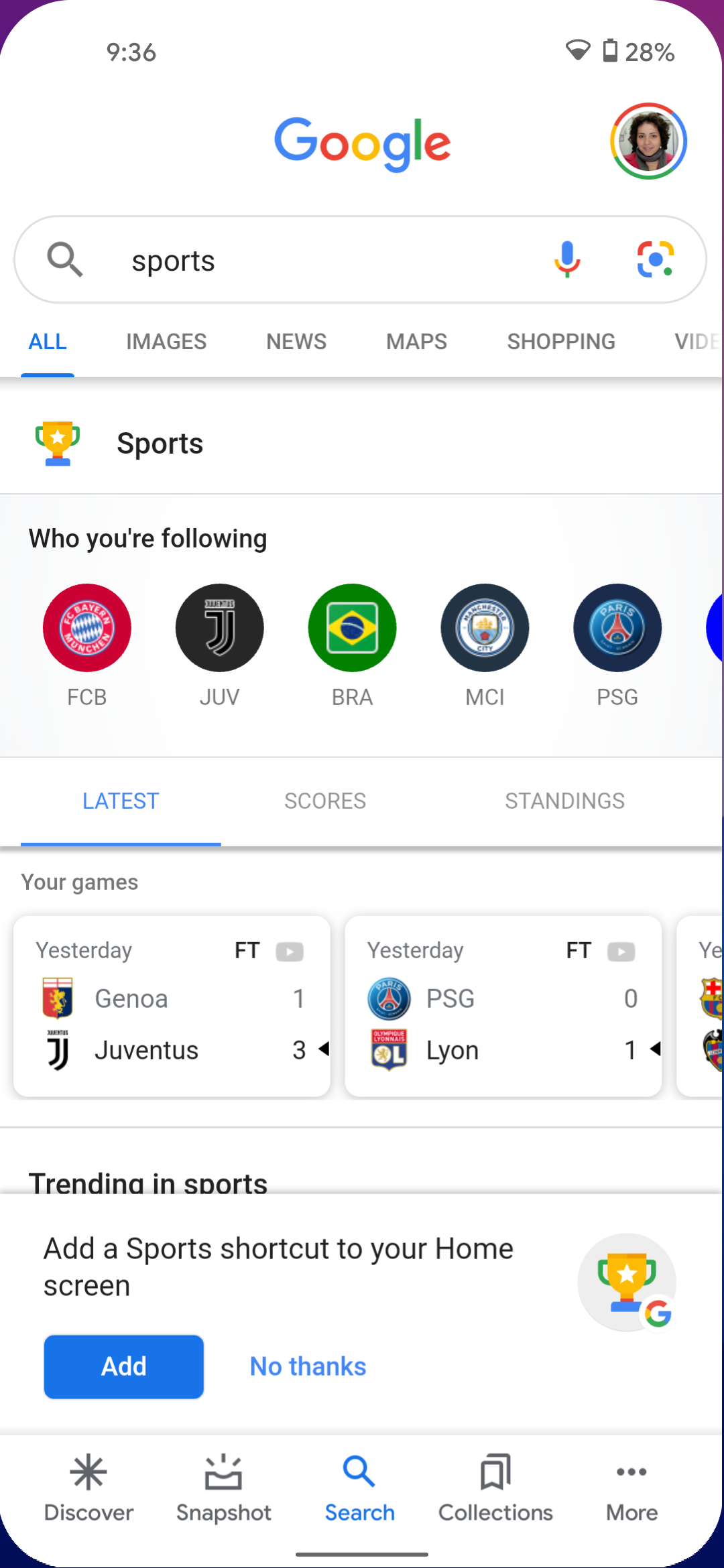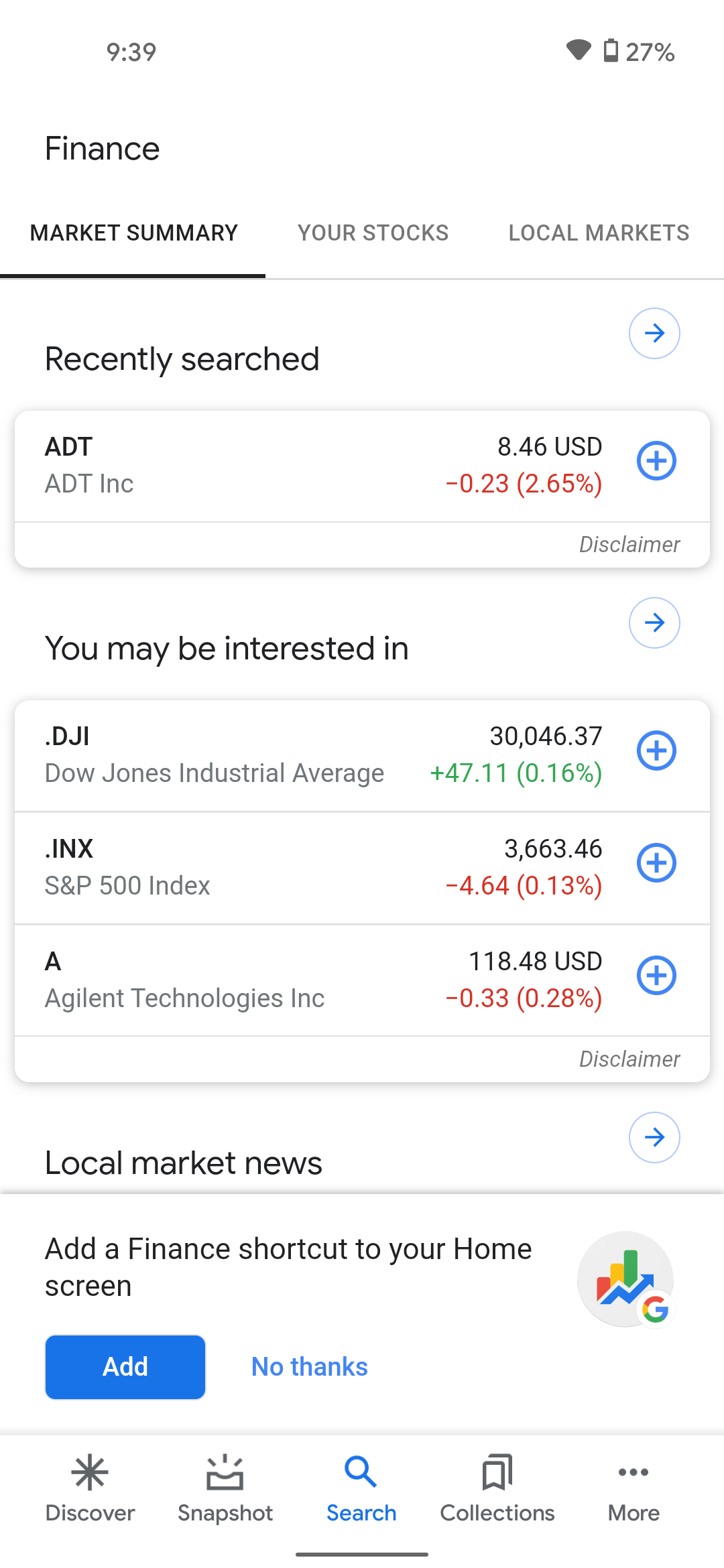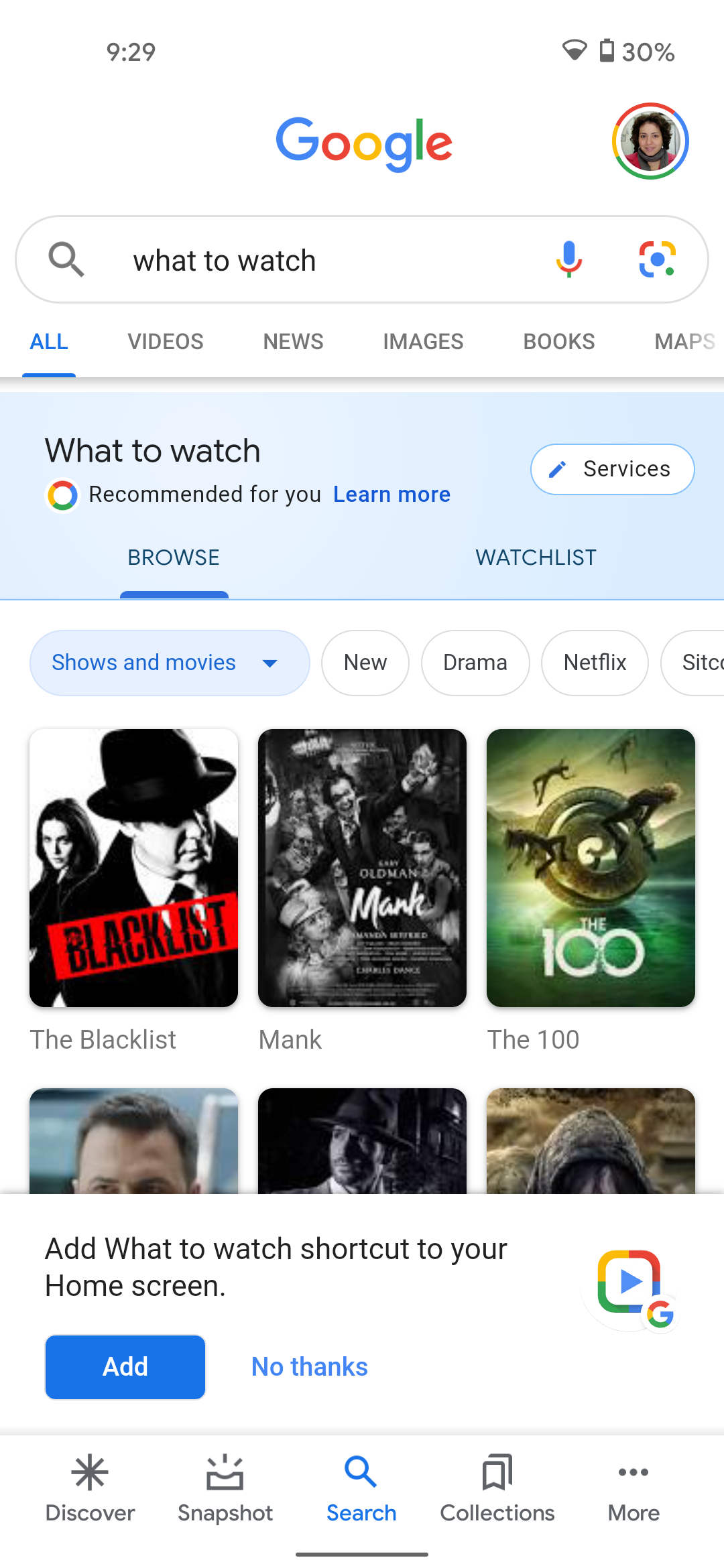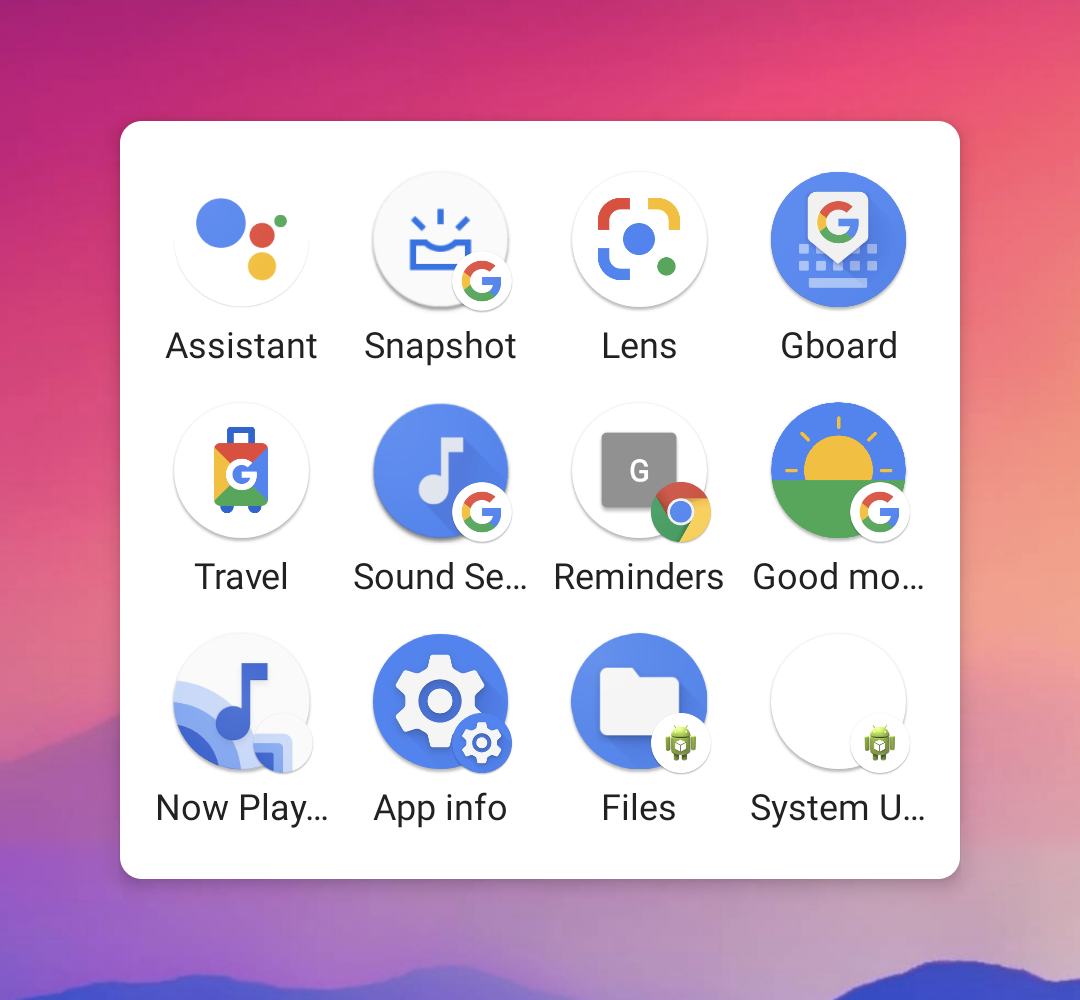Read update
- Updated with more
When you spend a great deal of your day digging into Android like we do, you start looking for ways to get to things faster. One shortcut can save us several taps and seconds of valuable time, which add up over a day, week, and more. Over the years, I've uncovered more and more interesting Android or Google-specific shortcuts that save me every day from the menial and repetitive task of digging into settings or apps. In this article, I'll share some of these shortcuts with you so you too can feel the small joy of reaching your favorite features and settings faster and more efficiently.
Icons for hidden pre-installed apps
Several pre-installed apps on our Android phones don't show up by default in the app drawer. Getting to them is a little convoluted if you don't know how to, so the simple trick is to launch them once and add their shortcut to your app drawer and/or homescreen.
- Gboard: Open the Play Store and search for Gboard. If it's installed on your phone, you can tap Open in its store listing, which goes straight to Gboard's settings. Go to Advanced > Show app icon and toggle it on. That'll put a Gboard icon in your app drawer.
- Digital Wellbeing: Open your phone's settings, scroll down to Digital Wellbeing & parental controls and open it. On the app's main screen, you can find Show icon in the app list, which can be toggled on.
- Live Transcribe: Although you can find the app in your phone's accessibility settings, the easiest way is to search for it on the Play Store. If it's installed on your phone, open it and you should be immediately asked if you want to add its icon to your app list. If not, you can find the option in the app's settings under More settings > Show icon in the app list.
- Sound Amplifier: Similarly to Live Transcribe, find the app on the Play Store, open it, and approve the pop-up that asks you to add it to the app list. You can also find the option in the app's overflow menu on the top right.
Left to right: Show icon in the app drawer for Gboard, Digital Wellbeing, Live Transcribe, and Sound Amplifier.
"Apps" from the Google app
The Google app is home to several features that you can get to with variable ease. Some, like Assistant, can be opened with a simple gesture, but others require a bit of tinkering. Google offers "apps" on the Play Store to speed things up; here they are:
- Google Assistant: Play Store, APK Mirror
- Google Assistant Interpreter Mode: Play Store, APK Mirror
- Google Lens: Play Store, APK Mirror
- Google Podcasts: Play Store, APK Mirror
In addition to these, Assistant has two hidden shortcuts that can make your life a lot easier if you use it a lot:
- Assistant settings: After installing the standalone Assistant app above, tap and hold on the app's icon and you should get three in-app launcher shortcuts — Settings, Explore, and My Day. Tap and hold on the Settings one then drag it into your homescreen. This is the fastest way to get to Assistant settings where you can change your language settings, manage your music services, set up payment methods, and much more.
- Assistant Snapshot: Snapshot is Assistant's Google Now replacement with all of your upcoming events, travel, deliveries, and more. But getting to it isn't easy: you have to open the Google app then switch to the second tab with the inbox-like shape, Snapshot. The first time you do this, you'll get a card at the top asking if you want to add a shortcut to your homescreen. Accept that and you'll have a Snapshot icon on your homescreen. It's not as good as swiping right to see the Google Now used to be, but it's a lot faster than launching Assistant first. Beware, though, if you dismiss the card, you have to clear the Google app's data to get it again. There's no other way to trigger it.
Left: Assistant Settings shortcut. Middle: Assistant Snapshot shortcut. Right: All 6 shortcuts.
Secret shortcuts from the Google app
Staying within the Google app, you may notice that some searches usually trigger Google to offer you a homescreen shortcut to get to that functionality faster next time. The most known one is probably weather, but there's more.
Some sports searches — specific leagues or competitions — usually offer that, but there's no rhyme or reason behind them. Usually, the shortcut is offered the first time, and if you dismiss it, you're never asked again, similar to the Assistant Snapshot example above. To get the question again, you have to clear the Google app's data and re-do the search. But in some cases, you can find an easy and reliable way to get to that shortcut. I know, I know, it doesn't make sense, but it is what it is.
- Google Sports: Search for "sports" in the Google app and you'll likely get the suggestion to add a shortcut to your homescreen. This also happens with specific leagues as well, but it's inconsistent. Clearing the Google app's data beforehand should always trigger, but that's such a drastic solution and I wouldn't recommend you do it unless you knew what that meant.
- Google Finance: Search for "finance" in the Google app and open Google Finance, or go to google.com/finance, and you should get the suggestion to add that shortcut to your homescreen.
- What to watch: The same thing happens when you look for "what to watch," you'll get a shortcut that takes you straight to your recommended movies and TV shows.
- Showtimes: Again, this shortcut suggestion shows up when you look for "showtimes" or "movie showtimes," though you'll have to live in a country where Google parses showtimes properly. It works for me in France, but it didn't in Lebanon.



Left: Sports. Middle: Finance. Right: What to watch.
- Google Dictionary: The first time you try to find any word's definition in a Google app search, you get a pop-up at the bottom of the screen asking to add a Dictionary shortcut. It won't show up again and there's no other way to trigger it.
- Word Coach: Below Google's definition cards there is often a second Word Coach card for testing your vocabulary knowledge. It's a fun way to learn English, and each card has a shortcut to add Word Coach to your homescreen at its bottom left — look for the small phone icon with a diagonal arrow.
- Google Weather: Search for the weather on Google to get the weather card, then tap the overflow (three-dot) button on the top right and choose Add to home screen.
Left: Dictionary. Middle: Word Coach. Right: Weather.
This next set uses Chrome to circumvent the lack of proper shortcuts for these features in the Google app. I wish Google would offer them natively, or at least make them all Progressive Web Apps.
- Google Travel: We may not be traveling too often these days, but once we do, I bet you'll often want to check your upcoming travel plans. Go to travel.google.com in Chrome and scroll down in the Trips tab to find a card marked as Return to your trips anytime. This lets you add a Travel icon to your homescreen. It's almost as good as the standalone Google Trips app that was killed last year. You can also tap the settings (three-dots) button in Chrome on the top right then Add to homescreen if you don't see the card.
- Reminders: If you don't want to dig in the Google app or ask Assistant to open your reminders, you can open assistant.google.com/reminders in Chrome and add a homescreen shortcut for that page.
- Google Collections: The Google app's Collections can be super handy. To open them quickly, open google.com/save in Chrome and, like above, add a shortcut to your homescreen for that page.
- Google Photos: It's true, Google Photos is a pre-installed app on our phones, but just in case you don't want to use the app or you've removed it, but still want to access the site, you can go to photos.google.com in Chrome and add a homescreen shortcut for it.
Left: Travel. Middle: Collections. Right: Reminders.
Widget shortcuts
It's understandable if you haven't looked at your phone's widget picker in a while. Many of us don't use them as much as we did a few years ago, or we add the one or two that we like and never check other options again. But some of these widgets are actually simple shortcuts, and they're worth adding to your homescreen.
- Google Maps Driving Mode: This shortcut launches Maps' built-in driving mode, which is powered by Android Auto or at least very similar to Auto's driving interface. The shortcut doesn't launch the new Assistant Driving Mode if it already rolled out to you, which can be a plus or not depending on how you feel about it. Some people don't like the new UI, so the shortcut would let them get back the old driving mode.
- Now Playing History: For Pixel phones with the Now Playing feature, this shortcut lets you see the history of all recognized songs, and open them in YouTube Music or Spotify. You'll find it under Android System Intelligence or Device Personalization Services.
- Google Sound Search: Although you can ask Assistant to recognize music around you, it's faster to use Google's Sound Search shortcut to immediately start listening.
Left: Google Maps Driving Mode. Middle: Now Playing History. Right: Google Sound Search.
Another extremely handy "widget" that I personally use every day is the Settings shortcut feature. When you try adding it to your homescreen, you're given several different settings sub-menus to pick from. Once added, it lets you jump into a specific section in settings straight from your homescreen. My personal favorites among these are:
- Notification log: It lists your most recent notifications so you can find the one you just dismissed by mistake. Just remember to toggle Notification history in settings beforehand so you can see these.
- App info: I use it to quickly get to the app info screen of pre-installed and system apps that don't have a launcher icon, like Play Services for example.
- System: It's a fast way to open developer settings or check for new updates.
Left & Middle: Add a settings shortcut to your homescreen. Right: The hidden notification log.
Google Assistant routines
A while ago, the Google Home app added the option to create homescreen shortcuts for any of your Assistant routines. To do it, you need to open your routines in the Home app (or in Assistant Settings), pick one, then look for the icon in the top right that looks like a phone with a diagonal arrow. Now you can have a quick shortcut to trigger your morning, bedtime, or other preset or custom routines.
Add a homescreen shortcut for your Home/Assistant routines.
Make your own shortcut
Two tricks let you add homescreen shortcuts to features inside almost any app you use. The first one is the ability to split app launcher shortcuts into their own icons, like I explained above with Assistant Settings. You can do this to get a homescreen shortcut for your apps section in the Play Store, your subscriptions in YouTube, an incognito tab in Chrome, a new event or new reminder in Calendar, and so on. That last one is a much better way to add reminders than using Assistant, for example.
Left & Middle: Splitting "My apps" into its own shortcut. Right: More launcher app shortcuts.
The second one is a little more hidden. Every Android app has a bunch of activities that can be launched directly with a third-party launcher. Nova supports that, but if you're happy with your phone's launcher, you can get Activity Launcher from the Play Store and go through the various activities to see if they do anything you're interested in. Two of my personal go-tos are:
- Files: Android 11 replaced the default Files or Downloads app on Android with Google's special Files app. The old files interface is still there and you can get to it by looking for the activity "com.android.documentsui.files.FilesActivity" and creating a shortcut for it.
-
System UI tuner: Some of you may remember System UI Tuner that showed up in Android Marshmallow. The feature was "removed" with Android 9.0 Pie, but it's still accessible through the activity:
"com.android.systemui/com.android.systemui.DemoMode" - It doesn't do much these days, but that's where you can disable some unnecessary icons from the status bar.
"Activity Launcher" lets you create shortcuts for any app's hidden activities.
I love using shortcuts to accomplish things faster, be it keyboard shortcuts on my computer, custom search engines in Chrome, text expansion apps, and shortcut icons on my phone. I don't use all of the examples above, but more than a dozen of them have become mainstays on my homescreen and save me some precious time every day. If you enjoy any other shortcuts — and if you've come across those unicorn special shortcuts inside the Google app like Weather and Word Coach — let me know. I'd love nothing more than to add a few of these to my arsenal.
UPDATE: 2021/10/04 18:47 EST BY RITA EL KHOURY
Updated with more
This post has been updated with more shortcuts that were suggested by our readers in the comments.

